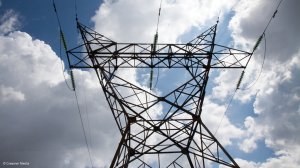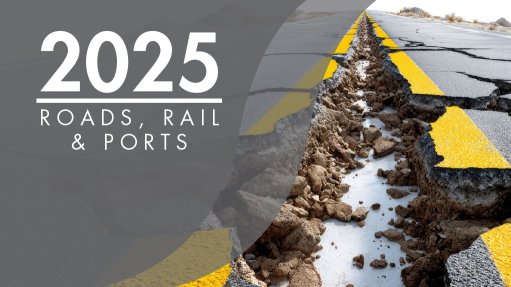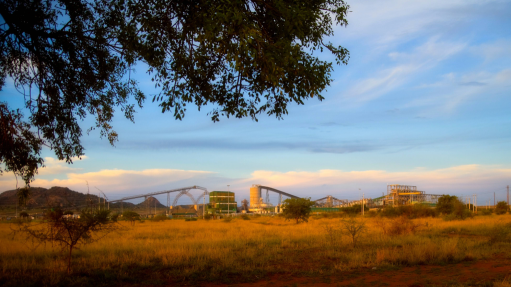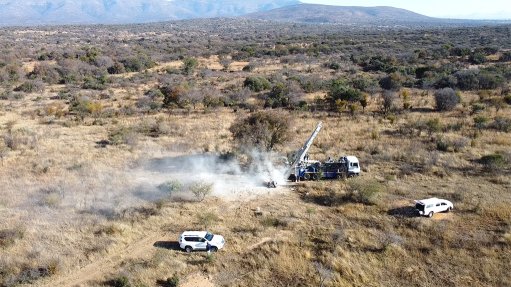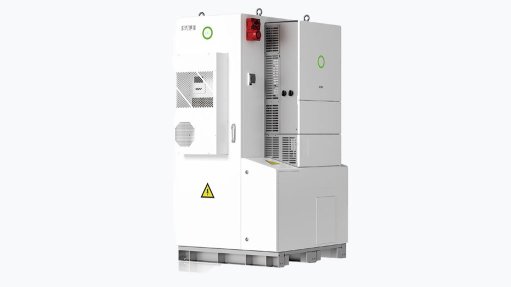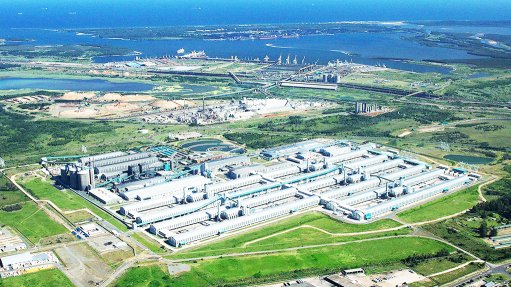Concern lingers over both content of updated IRP and lack of consultation
Serious questions continue to be raised about both the content of the Integrated Resource Plan (IRP) for electricity currently being discussed at the National Economic Development and Labour Council (Nedlac) as a precursor to its approval by Cabinet, and the drafting and consultation processes that have been employed.
Electricity and Energy Minister Dr Kgosientsho Ramokgopa has indicated that he is keen for the updated IRP to be approved soon, given that the prevailing IRP2019 is outdated. However, his initial deadline of the end of March was not met.
The document before Nedlac is referred to variously as IRP2024 and/or IRP2025 and was drafted hurriedly late last year, with scant consultation.
This redrafting followed heavy criticism of the version, then dubbed the draft IRP2023, released in January 2024 by Ramokgopa’s predecessor, Gwede Mantashe, which stakeholders rejected partly because its base case included loadshedding until at least 2027.
More than 4 300 public comments were received, and most of the substantial submissions highlighted serious problems with both the modelling and cost assumptions used, which had resulted in incorrect and potentially economically damaging conclusions.
Acutely aware of these criticisms, Ramokgopa, who was appointed Electricity and Energy Minister in the Government of National Unity Cabinet, commissioned the South African National Energy Development Institute to remodel the IRP.
The results were announced in November with a promise that the new draft would be released prior to Cabinet approval.
However, the document was released only for Nedlac consideration and not for broad consultation, despite the material changes included relative to the version released by Mantashe.
MEANINGFUL CONSULTATION?
Speaking during a webinar hosted by EE Business Intelligence, Meridian Economics MD Dr Grové Steyn said that the version currently before Nedlac not only contained technical flaws but also did not include sufficient information to enable meaningful consultation.
“Despite welcome improvements in the technology cost assumptions [compared with the draft IRP2023], overall, the input assumptions remain opaque and poorly documented,” Steyn said.
“It is astonishing that the current IRP document does not show data on the technology capacity, energy mix, costs or emissions for the modelled scenarios or the ‘Proposed Balanced Plan’.
“Technically this means that it does not qualify as an IRP in terms of the legal definition,” he added, highlighting the requirement for policy‐making to satisfy the Constitutional principle of legality, which includes a minimal rationality requirement.
Presidential Climate Commission (PCC) executive manager Lebogang Mulaisi also questioned the process, describing the Nedlac discussions under way as the “last opportunity” to influence the policy, despite ongoing concern as to whether the public consultation phase preceding it was truly meaningful.
She questioned, for instance, whether having hosted a workshop with stakeholders and experts with a day’s notice could be considered as having been a meaningful consultation.
In addition, Mulaisi reported that the PCC had been struggling “to track how the consultation resulted in any amendments to the updated version”.
LOGICAL FLAWS
Steyn also argued that the Proposed Balanced Plan in the document before Nedlac had not been logically derived from the underlying analysis, which only introduced nuclear when the gas build was disallowed. However, the Proposed Balance Plan included both gas and nuclear.
The outcome, thus, “forced” in technologies that were uneconomical and which would rely on public procurement, where the risk of these costs being “socialised” was high.
“South Africa's recent empirical experience with these types of projects provides stark warnings about their enormous risk for cost overruns and opportunities for rent-seeking and even corruption,” Steyn said, referring specifically to Eskom’s Medupi, Kusile and Ingula megaprojects.
In his presentation, independent energy analyst Clyde Mallinson sought to quantify these additional costs using a model comparing generation-mix scenarios to 2040.
This analysis showed that South Africa could achieve yearly savings of R258-billion by pursuing a mix that had no gas, coal and nuclear and relied on solar PV, wind and storage instead.
“That leaves plenty of savings to add in synchronous condensers and other gadgets if required [to stabilise the grid], as well as more than enough money to extend and upgrade the transmission as well as the distribution grid.”
In addition, it would result in a 112 TWh surplus, which Mallinson calculated would be enough to provide 11-million households with “triple the amount of electricity necessary to lift them out of energy poverty”. It could also be turned to economic account as businesses adapted their consumption patterns to the availability of cheap midday electricity.
ACCOUNTING FOR GRID COSTS
However, Monique le Roux, of Stellenbosch University’s Centre for Renewable & Sustainable Energy Studies, cautioned that failing to account for grid-related constraints could artificially skew models in favour of renewable energy.
Le Roux noted that a significant increase in transmission and distribution infrastructure investments was needed in many cases to avoid delays and unexpected costs in the connection of variable renewable energy (VRE).
“The impact of VRE on electricity prices is not well studied or understood and is often disputed,” she explained, noting that various studies also showed that increased VRE generation led to more price volatility.
Acting Department of Electricity and Energy director-general Subesh Pillay acknowledged in his address that the lack of a coherent, adaptive planning framework had undermined investor confidence, municipal viability and policy legitimacy.
He also argued that the current transition from a period of crisis management to greater stability was creating the conditions for “deliberate, evidence-based, and future-fit planning choices”.
Pillay cautioned against deferring decisions, however, arguing that South Africa’s recent period of supply instability pointed to the dangers associated with inadequate planning and execution.
“As we look toward 2050, let us not make the mistake of assuming that energy planning is merely a technocratic exercise.
“It is, at its core, a nation-building endeavour — one that speaks to what kind of economy we seek, what kind of society we aspire to, and what kind of future we wish to leave behind.”
UNLOCKING OPPORTUNITY
Pillay added, too, that the planning decisions made today would either entrench inequality or enable opportunity.
“They will either perpetuate fragility or unlock resilience.
“They will either leave us reacting to crises or position us as a developmental State capable of anticipating and shaping its own destiny.”
Likewise, Steyn argued that the energy transition presented South Africa with its best economic opportunity to unlock sustainable economic growth and development, and create hundreds of thousands of net new jobs.
“The IRP can and should be the policy statement that provides this vision and galvanises all stakeholders and investors to contribute to this process.
“This outcome is within reach and is certainly what South Africans deserve after loadshedding, Covid, and years of economic stagnation,” he asserted, adding that the time was ripe for a redesign of the IRP process to ensure that it became the authoritative policy vision for the sector.
“Rather than being an arena for endless contestation and wasted energy, it can become a policy process that stakeholders can get behind and support,” Steyn said.
Article Enquiry
Email Article
Save Article
Feedback
To advertise email advertising@creamermedia.co.za or click here
Press Office
Announcements
What's On
Subscribe to improve your user experience...
Option 1 (equivalent of R125 a month):
Receive a weekly copy of Creamer Media's Engineering News & Mining Weekly magazine
(print copy for those in South Africa and e-magazine for those outside of South Africa)
Receive daily email newsletters
Access to full search results
Access archive of magazine back copies
Access to Projects in Progress
Access to ONE Research Report of your choice in PDF format
Option 2 (equivalent of R375 a month):
All benefits from Option 1
PLUS
Access to Creamer Media's Research Channel Africa for ALL Research Reports, in PDF format, on various industrial and mining sectors
including Electricity; Water; Energy Transition; Hydrogen; Roads, Rail and Ports; Coal; Gold; Platinum; Battery Metals; etc.
Already a subscriber?
Forgotten your password?
Receive weekly copy of Creamer Media's Engineering News & Mining Weekly magazine (print copy for those in South Africa and e-magazine for those outside of South Africa)
➕
Recieve daily email newsletters
➕
Access to full search results
➕
Access archive of magazine back copies
➕
Access to Projects in Progress
➕
Access to ONE Research Report of your choice in PDF format
RESEARCH CHANNEL AFRICA
R4500 (equivalent of R375 a month)
SUBSCRIBEAll benefits from Option 1
➕
Access to Creamer Media's Research Channel Africa for ALL Research Reports on various industrial and mining sectors, in PDF format, including on:
Electricity
➕
Water
➕
Energy Transition
➕
Hydrogen
➕
Roads, Rail and Ports
➕
Coal
➕
Gold
➕
Platinum
➕
Battery Metals
➕
etc.
Receive all benefits from Option 1 or Option 2 delivered to numerous people at your company
➕
Multiple User names and Passwords for simultaneous log-ins
➕
Intranet integration access to all in your organisation




